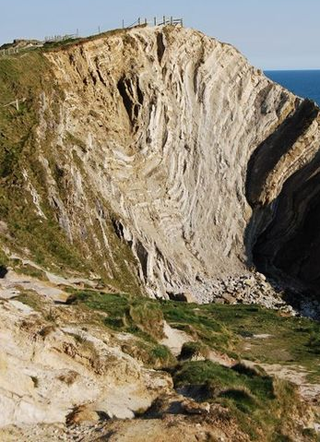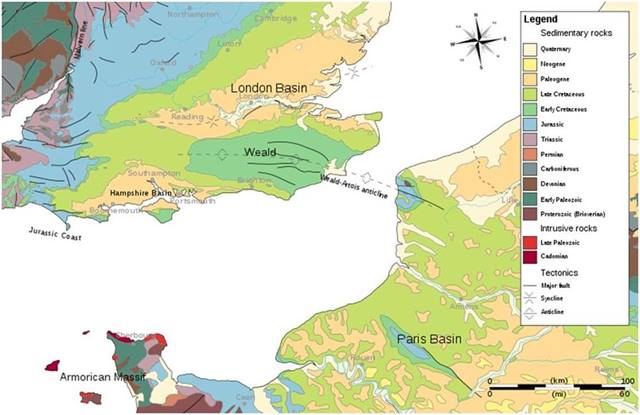Alpine Orogeny
The position of the continents by 50 million years ago looked quite similar to that of today. The Alpine Orogeny occurred mainly between 65 and 2.5 million years ago, although it is still active today. It saw the collision of the African and Eurasian plates, and the closure of the Tethys Ocean as oceanic lithosphere was subducted northwards beneath the Eurasian Plate, leaving today what we now know as the Mediterranean Sea.
Evidence in the UK
The continental collisions of the Alpine Orogeny formed the Alps, Pyrenees and Carpathian Mountains in Europe. With the UK being over 1000 km from the collision zone, only minor structures record the orogeny. The majority of evidence comes from the Mesozoic and Cenozoic rocks of southern England, where it gave rise to localised folds and faults.
Image courtesy of Ian Kenyon.

The 'Lulworth Crumple', Dorset
The Weald Anticline, running between the Weald in Southern England and the Artois in Northeast France, is a gently folded basin whose sediments are of early Jurassic to Cretaceous age. The main trend of the fold axis is E-W.
The Hampshire Basin.
The Isle of Wight Monocline, and the steeply dipping chalk of the Needles.
The tilted and crumpled rocks of the Jurassic Coast (Dorset), eg. Lulworth Cove.
Image courtesy of H. W. Goede.

Weald anticline